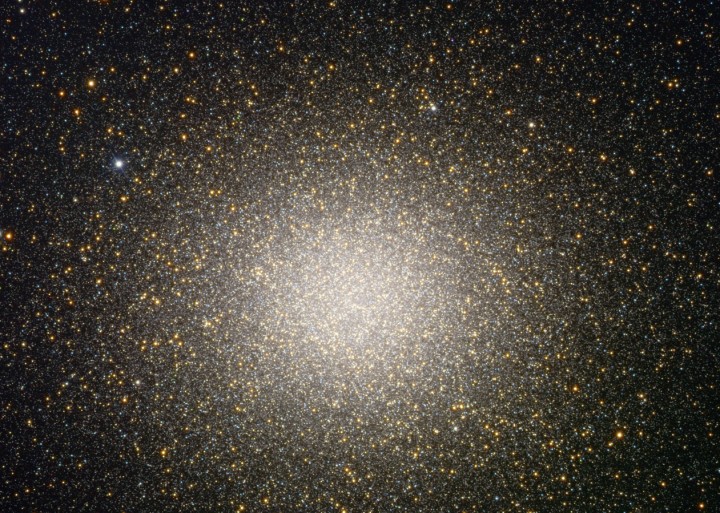Credit & Copyright: Martin Pugh
Explanation:
Centaurus
is one of the most striking constellations in
the southern sky.
The Milky Way flows through this
celestial expanse
whose wonders also include the closest star system to the Sun,
Alpha Centauri,
and the largest globular star cluster in our galaxy,
Omega Centauri
(aka NGC 5139).
This sharp
telescopic view of Omega Centauri shows off the central
regions of the cluster of about 10 million stars.
Omega Cen itself
is about 15,000 light-years away and 150 light-years in diameter - the
largest of 150 or so
known
globular star clusters that roam the halo of
our galaxy.
Though most star clusters are composed of stars with the same age and
composition, the enigmatic Omega Cen
exhibits the
presence of different stellar populations with a spread of ages
and chemical abundances.
In fact, Omega Cen may be the remnant core
of a small galaxy
merging
with the Milky Way.
1999 2000 2001 2002 2003 2004 2005 2006 2007 2008 2009 2010 2011 2012 2013 2014 2015 2016 2017 2018 2019 2020 2021 2022 2023 2024 2025 |
Yanvar' Fevral' Mart Aprel' Mai Iyun' Iyul' Avgust Sentyabr' Oktyabr' Noyabr' Dekabr' |
NASA Web Site Statements, Warnings, and Disclaimers
NASA Official: Jay Norris. Specific rights apply.
A service of: LHEA at NASA / GSFC
& Michigan Tech. U.
|
Publikacii s klyuchevymi slovami:
Omega Centauri - globular cluster - Sharovoe skoplenie - Omega Centavra
Publikacii so slovami: Omega Centauri - globular cluster - Sharovoe skoplenie - Omega Centavra | |
Sm. takzhe:
Vse publikacii na tu zhe temu >> | |
